Wild Horses
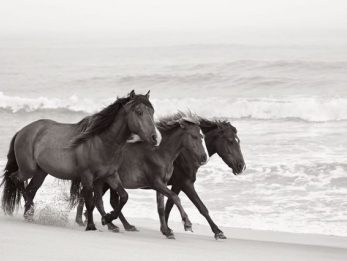
Photo by Drew Doggett
DISCOVERING THE HORSES OF SABLE ISLAND
Nova Scotia – Canada
Sable Island, a small strip of land off the coast of Nova Scotia, is like nowhere else on Earth. The island is known for its history of shipwreck and for its incredibly resilient residents; it is home to one of the last herds of completely wild horses who have established their own independent way of life on the island’s 26 rugged miles.
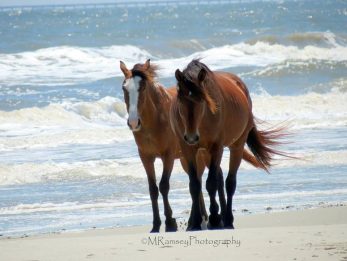
Photo by Misty Ramsey
THE HORSES OF CUMBERLAND ISLAND
National Seashore – Georgia, U.S.
Cumberland has the only herd of feral horses on the U.S. Atlantic coast that is not managed (no food, water, veterinary care, or population control). The herd is affected by all the natural stressors faced by native wildlife.
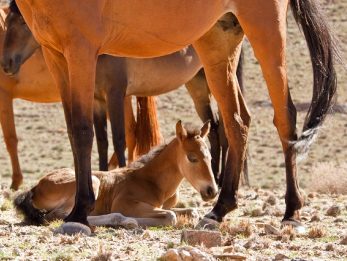
Photo by Namibia Wild Horses Foundation
THE HORSES OF NAMIBIA
The Namib Desert of Namibia, Africa
The Wild Horses of the Namib hold a powerful fascination. For centuries their origin was shrouded in mystery. Their habitat, the barren plains around Garub on the eastern fringe of the Namib Desert (part of the Namib-Naukluft Park), is no paradise. Nevertheless, they have managed to adapt to the harsh conditions and the arid land which fulfills all their needs.
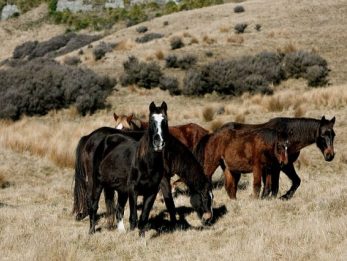
Photo by Jan Maree Vodanovich
KAIMANAWA HERITAGE HORSES
New Zealand’s Wild Horses
They are still alive: the Wild Horses in the north of New Zealand. In the Kaimanawa ranges they found a place to live. Kaimanawa horses are a population of feral horses in New Zealand that are descended from domestic horses released in the 19th and 20th centuries.
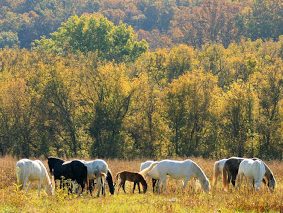
Photo by Tommy Burgess
MISSOURI’S WILD HORSES
Ozark National Scenic Riverways – Missouri, U.S.
The horses have been running free for over 100 years. These horses are believed to have originated mainly from domestic animals that were freed during the Depression years due to the inability of the farmers to feed them.
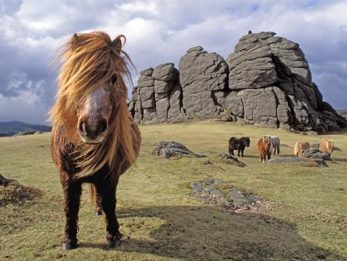
Photo by ThirdSector.co.uk
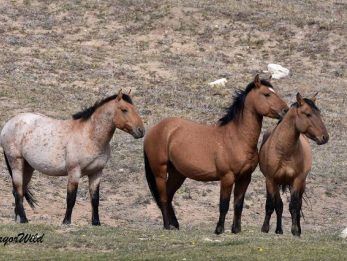
Photo by Pryor Mtn. Wild Mustang Center
PRYOR MOUNTAIN MUSTANGS
Pyror Mountains – Wyoming, U.S.
The Pryor Mountain Wild Horses are unique. Cortez once said “…Next to God, we owed the victory to the horses…” in discussing his conquest of the New World. The Pryor Mountain Wild Horses are the descendants of these important horses. They are truly horses with a heritage.
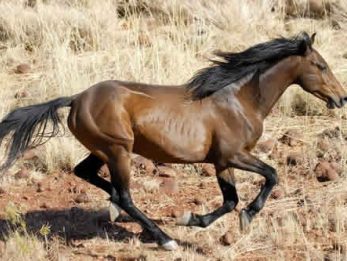
Photo by unknown
BRUMBY HORSES
Australia
Brumbies are feral horses that roam free in Australia. Although bands of brumbies are found throughout the continent, the most well-known populations are found in the Northern Territory and Queensland. Brumbies are the descendants of escaped, released or lost animals that date back to the time of the first European settlements on the continent.
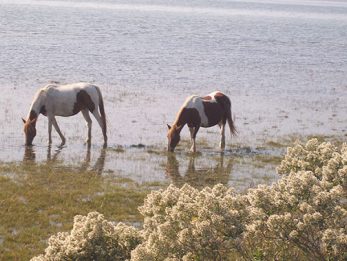
Photo – Chincoteague Nat’l Wildlife Refuge
CHINCOTEAGUE PONIES
Assateague Island National Seashore, Maryland & Chincoteague National Wildlife Refuge, Virginia – U.S.
These small but sturdy, shaggy horses have adapted to their environment over the years by eating dune and marsh grasses and drinking fresh water from ponds. While they appear tame, they are wild, and Park Rangers urge visitors not to feed or pet them. The Maryland herd is managed by the National Park Service. The Virginia herd is owned by the Chincoteague Volunteer Fire Company.
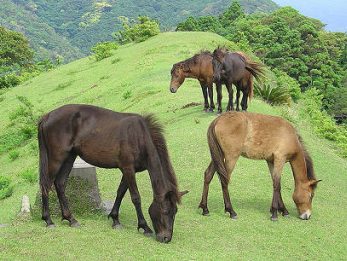
Photo by JKT-c
MISAKI-UMA HORSES
Kyushu prefecture – Japan
Misaki horses can be found grazing in meadows along Cape Toi (“Toimisaki” in Japanese). Like many “native” horse breeds in Japan, the original ancestors of the Misaki breed were brought over from China by humans hundreds of years ago.
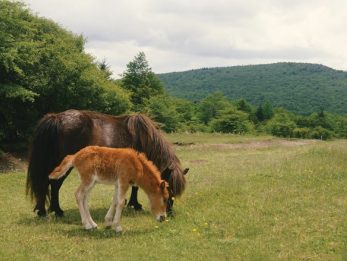
Photo by Bruce Ingram
GRAYSON HIGHLANDS PONIES
Grayson Highlands State Park – Virginia, U.S.
These adorable equines are not indigenous to the region; rather, they were introduced into the area by the U.S. Forest Service several decades ago to control overgrowth along the area’s historically logged balds. Since then, they have solidified themselves as friendly (almost too friendly) faces along one of the most famous hiking trails in the country … The Appalachian Trail.
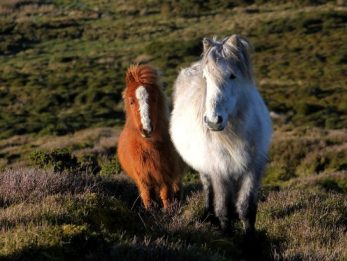
Photo by Sandra Roberts
WELSH CARNEDDAU MOUNTAIN PONY
Carneddau hills of Snowdonia, Wales
In 2013 the ponies – likely descended from a prehistoric Celtic pony – were declared completely unique after researchers from Aberystwyth University discovered they were a genetically exclusive population, after being protected by generations of hill farmers. Free to roam Snowdonia National Park they are a protected species with no more than 200 thought to exist.
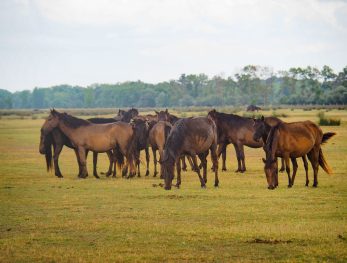
Photo by Alex
DANUBE DELTA HORSES
Danube Delta – Romania
These picturesque creatures live among the wetlands and forests of Romania’s Danube Delta region.While there has been a feral horse presence in this area for centuries, the number of individuals has ballooned to 4,000 since the 1990s as a result of humans closing their farms and releasing their livestock into the wild.
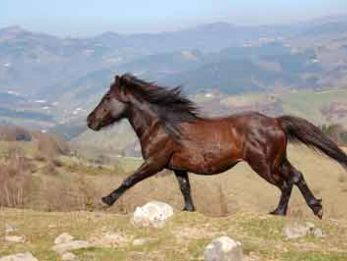
Photo by unknown
POTTOKA PONIES
Pyrenees Mountains of France & Spain’s Basque Country
Pottoka is a original breed from Euskal Herria (The Basque Country). It is a sturdy strong animal and very well adapted to the environment of Euskal Herria country side and moulded by it.
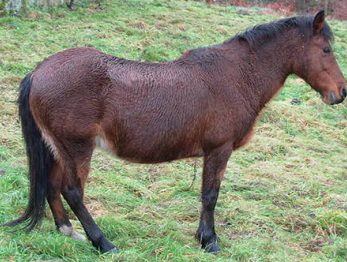
Photo by Maria Cartas
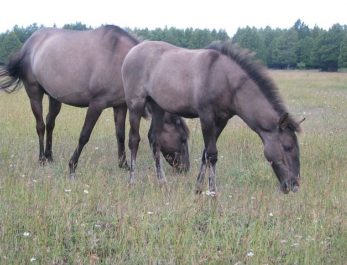
Photo by Ravenseyrie Sorraia Mustang Preserve
GARRANO & SORRAIA HORSES
Portugal
The Garrano is a prehistoric Portuguese pony which has adapted to the climate & geography in the northern mountain regions of the Iberian Peninsula. One of the breeds unique characteristics is a concave profile. The Garrano blood is thought to run through the veins of the Asturian & Galacian horses of northern Spain as well as the mighty Andalusian which occasionally displays a concave profile as proof.
The Sorraia horse was so named because these horses had their last stronghold in a wilderness area near the Portuguese river Sorraia. The Sorraia is a small horse, typically of grulla color. Its “trademark” is a convex or subconvex head profile.